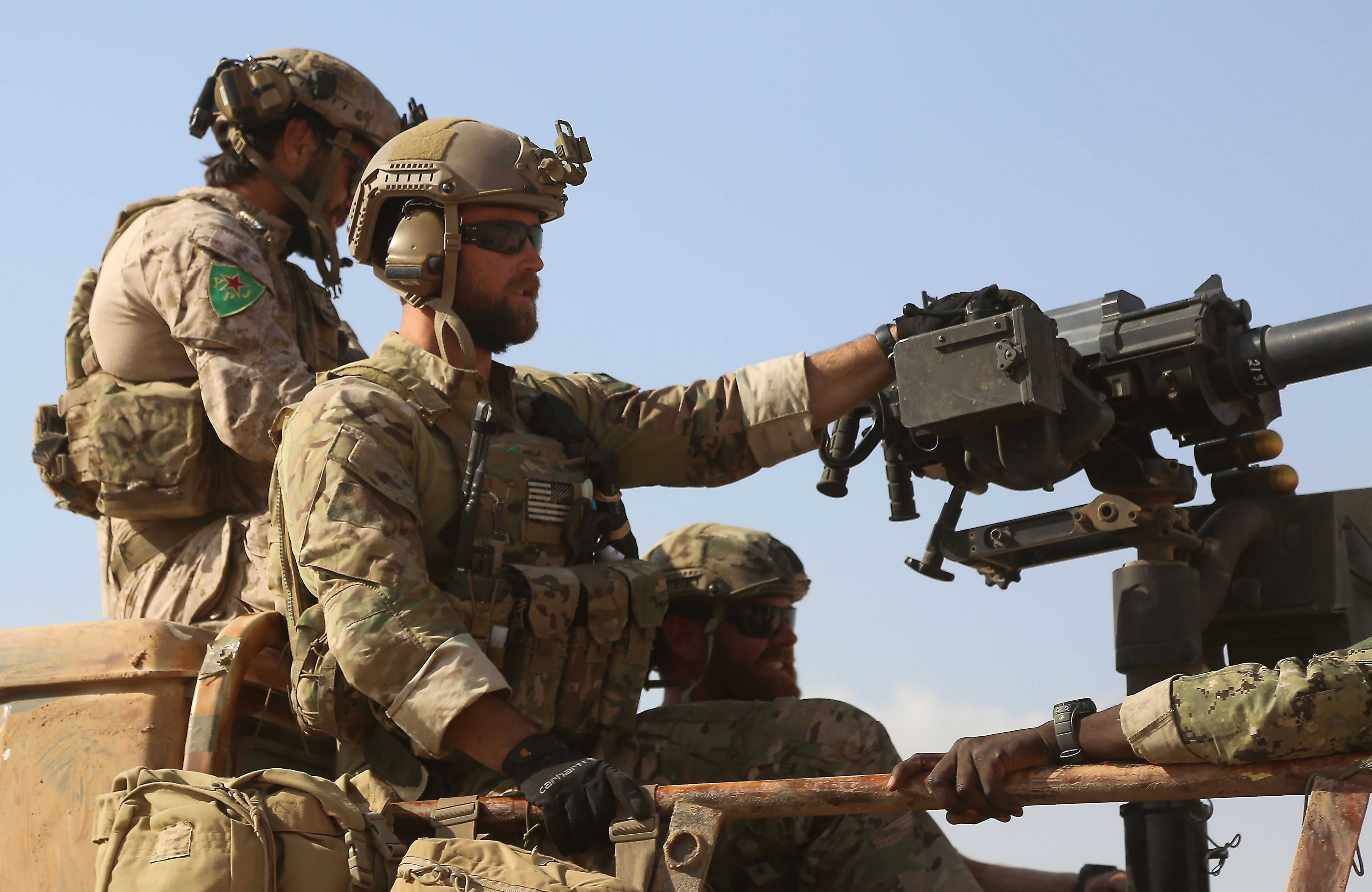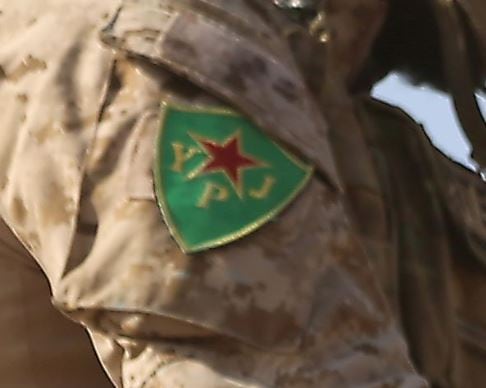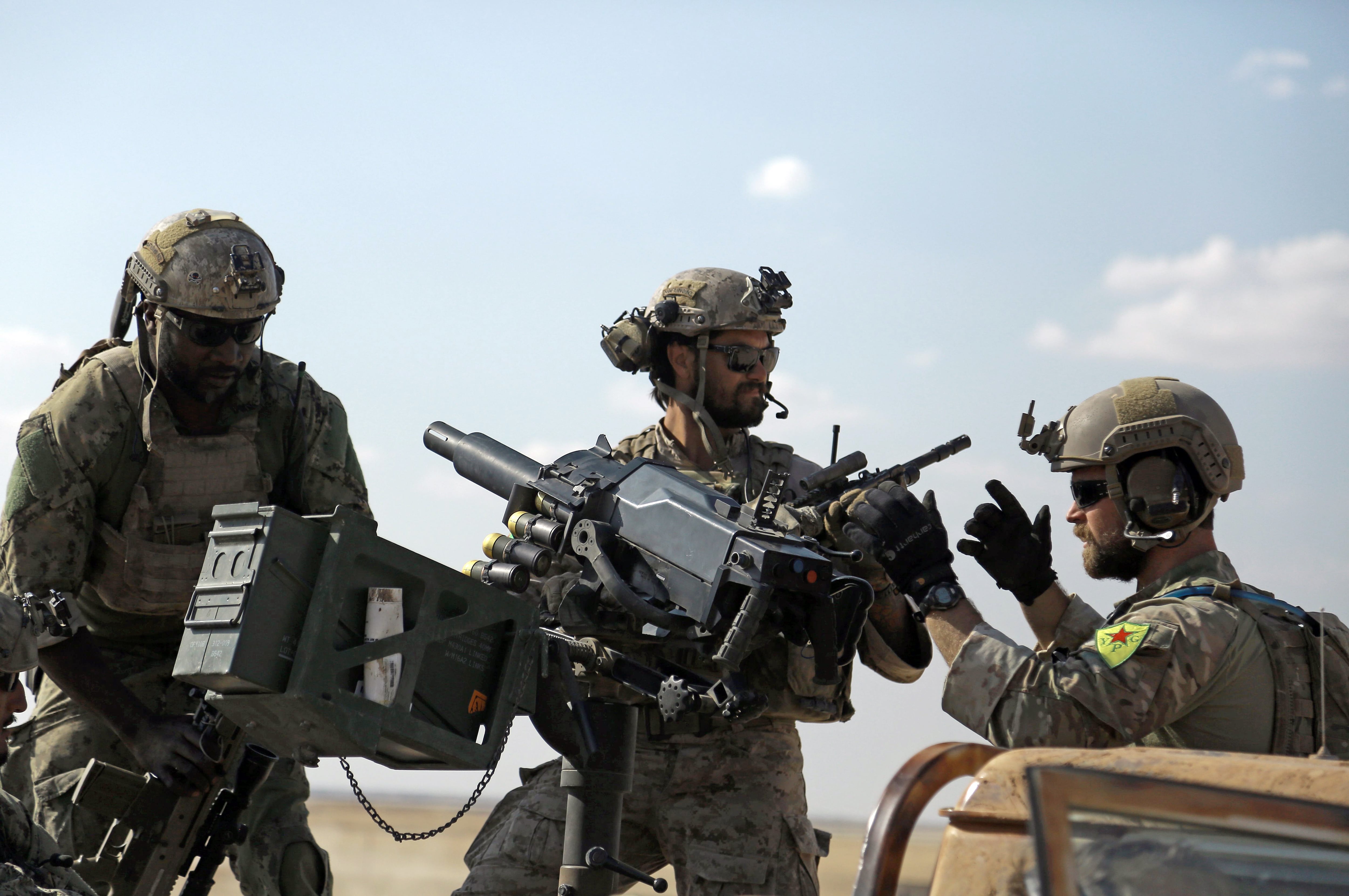Photos have emerged of American special operations troops in Syria are fighting alongside Kurdish rebels – and wearing uniform insignia affiliated with a Kurdish rebel group the patch of the militia known as the "YPG, whose connection to Turkish terrorists could could fuel tension between the U.S. and a key ally in the Islamic State fight." [[[THIS CLAUSE OK? WOULD YOU PREFER SOMETHING DIFFERENT?]]]
The images were taken in a village about 40 miles north of the Islamic State group's self-declared capital of Raqqa, which is the target of a newly announced offensive being led by a disparate group of Kurdish and Arab fighters, and backed by American military advisers and air support. They highlight the complicated network of alliances the U.S. is trying to forge in Syria, and the ethnic and sectarian tensions that could tear apart this fragile coalition.
Speaking Thursday, a top Pentagon official said it's fairly common said it’s not uncommon for Green Berets and other special operators to wear allies' patches the uniform insignia of allied partner force.
"Special operations forces, when they operate in certain areas, do what they can to, if you will, blend in with the community to enhance their own protection, their own security," said Pentagon spokesman Peter Cook said Thursday.

The Pentagon says U.S. troops in Syria are conducting an advise-and-assist mission and are not serving in front-line combat. Here, one American commando can be seen wearing a uniform patch of a Kurdish rebel group.
Photo Credit: Delil Souleiman/AFP/Getty Images
Taken by a photographer working for Agence France-Presse, the photos show a cadre of American troops in an unarmored Toyota pickup truck mounted with a grenade launcher. At least one bearded soldier is wearing both an American flag patch and also a green patch with a star signifying the Syrian Kurdish People’s Protection Forces, known as the "YPG."
A spokesman for U.S. troops in Iraq and Syria, Army Col. Steve Warren, a spokesman for U.S forces in Iraq and Syria, called the patch said on Twitter Thursday it's not uncommon for U.S. special operators to wear patches from allies as a "sign of partnership."
But the photos could may cause diplomatic tension with Turkey, a NATO ally that opposes U.S. support for the YPG. Turkey considers the YPG militia to be akin to the Kurdistan Workers Party, known as the PKK, a Turkey-based group that has mounted terrorist attacks in Turkey.

Close-up of the Kurdish militia patch being worn by American commandos in Syria.
Photo Credit: Delil Souleiman/AFP/Getty Images
The patch is also significant because the United States' nominal ally in Syria is the Syrian Democratic Forces, a recently created umbrella group that U.S. defense officials insist includes Arabs as well as Kurds. Many Syria experts, however, say the vast majority of SDF fighters are Kurdish and that few Sunni Arabs are supporting the group.
There are currently 300 U.S. special forces troops authorized to be in deploy to Syria.
The photos have raised new questions about how close these U.S. troops are to front-line combat. Cook declined to say where those troops were, citing operational security.
"They are on an advise-and-assist mission with forces that are carrying out the fight against [Islamic State militants]; trying to lend their support to them; use their skill set and their capabilities to enhance the effectiveness of those forces," Cook said. "They are not at the front line," Cook said."

American commandos walk in the Syrian village of Fatisah, north of Raqqa, on May 25, 2016.
Photo Credit: Delil Souleiman/AFP/Getty Images
Andrew Tilghman is the executive editor for Military Times. He is a former Military Times Pentagon reporter and served as a Middle East correspondent for the Stars and Stripes. Before covering the military, he worked as a reporter for the Houston Chronicle in Texas, the Albany Times Union in New York and The Associated Press in Milwaukee.




